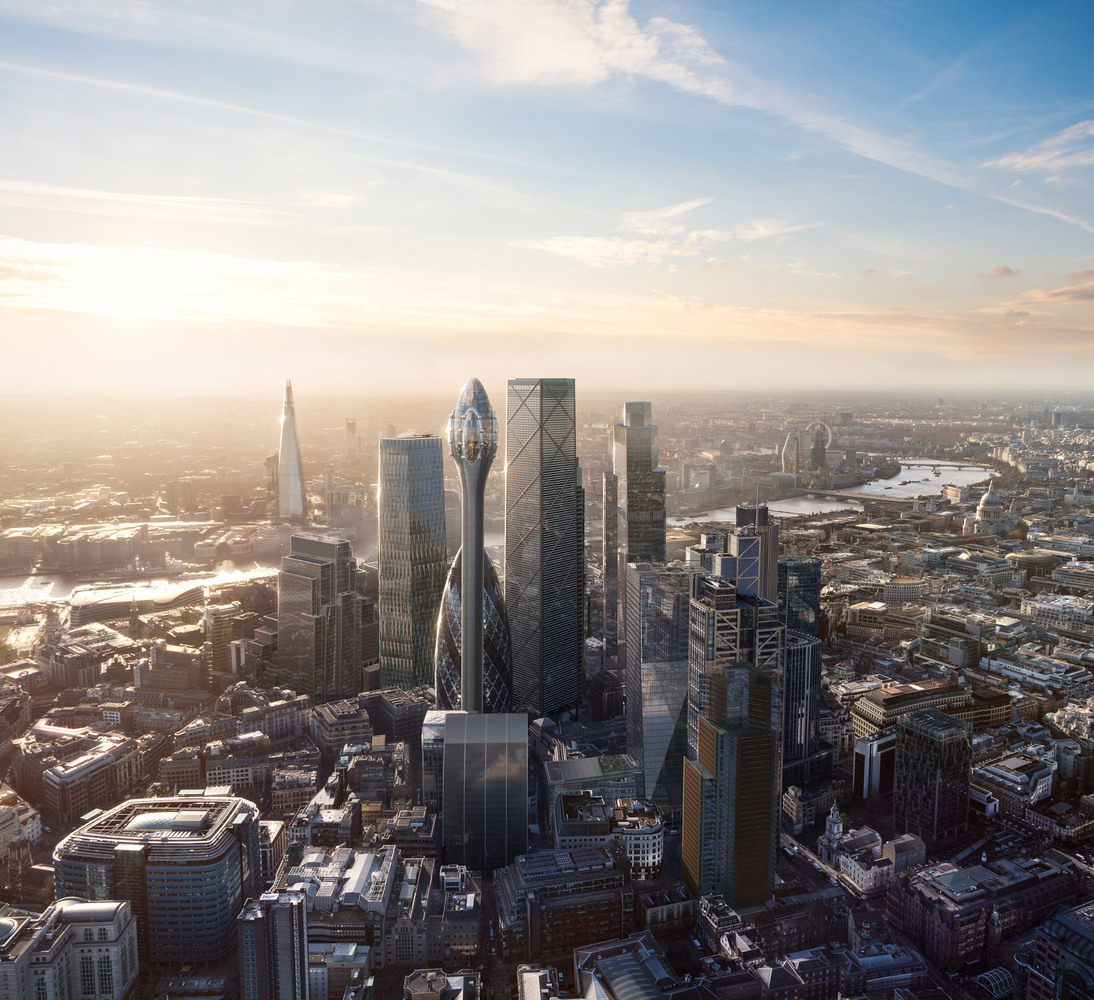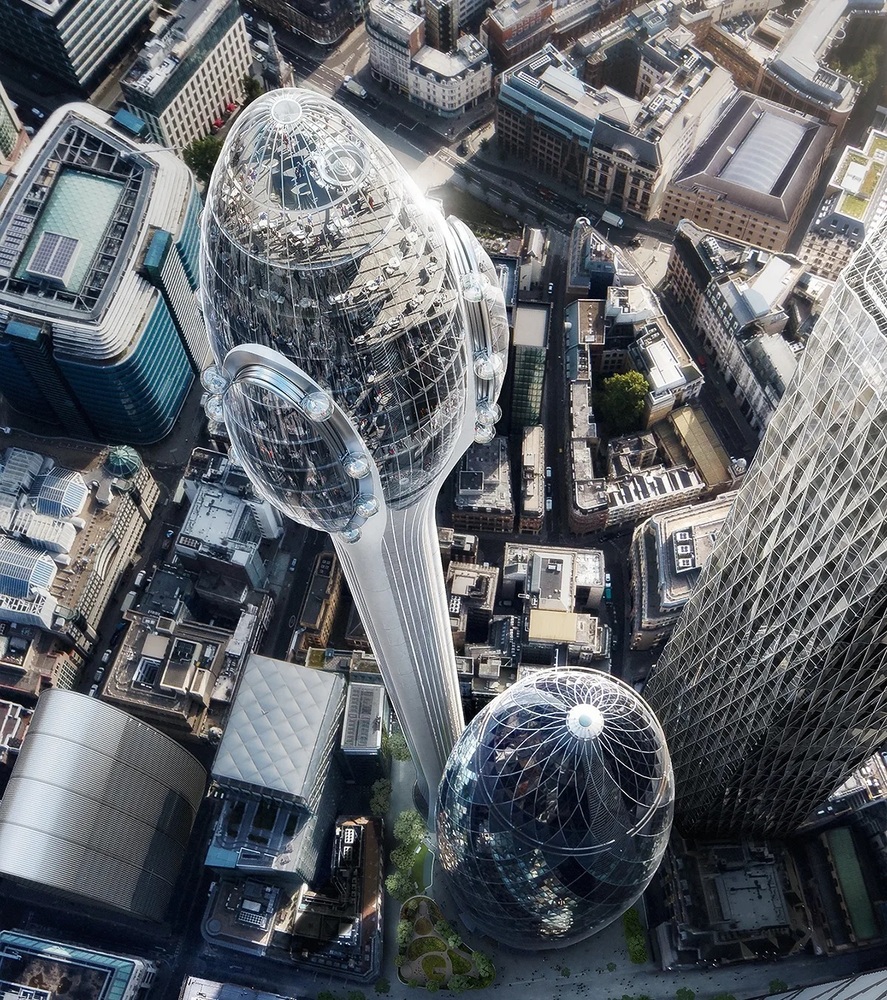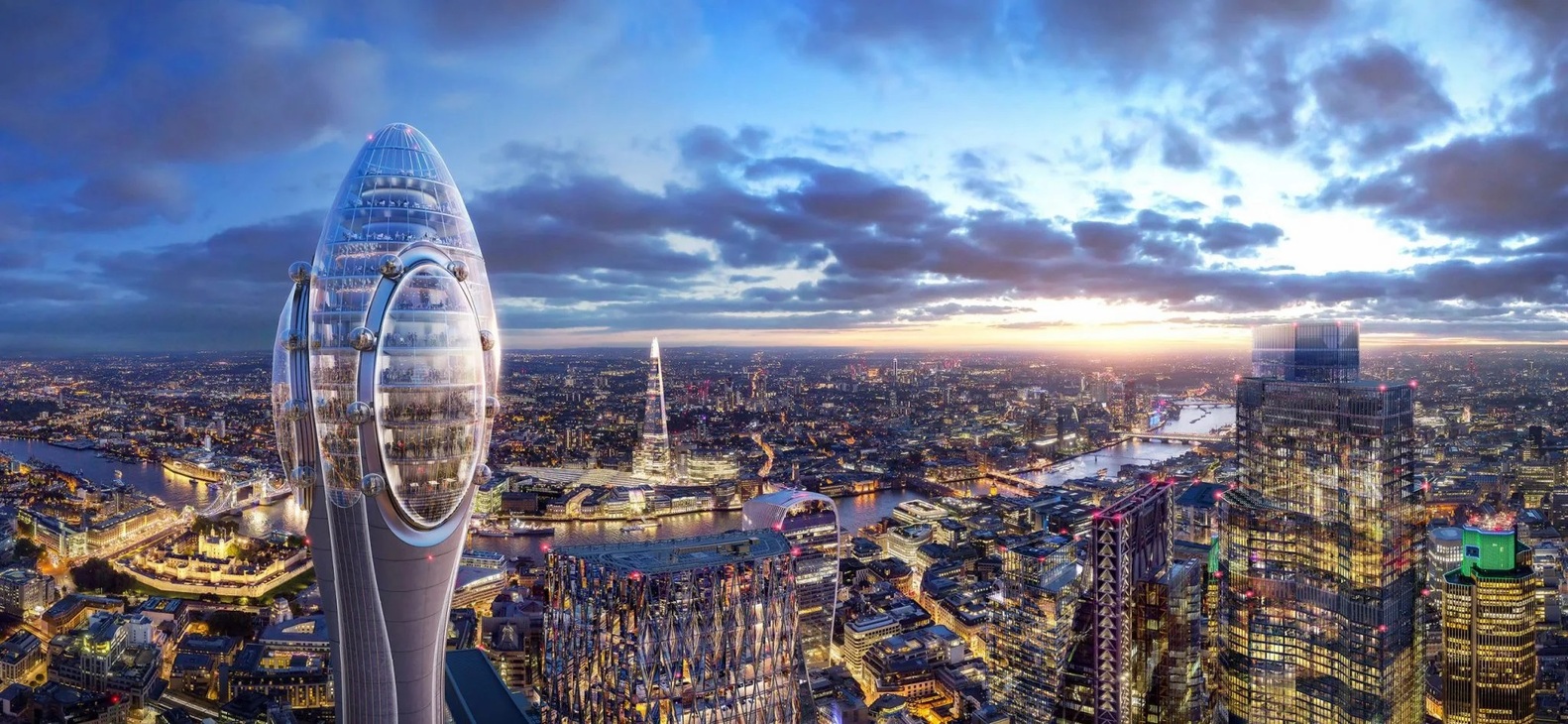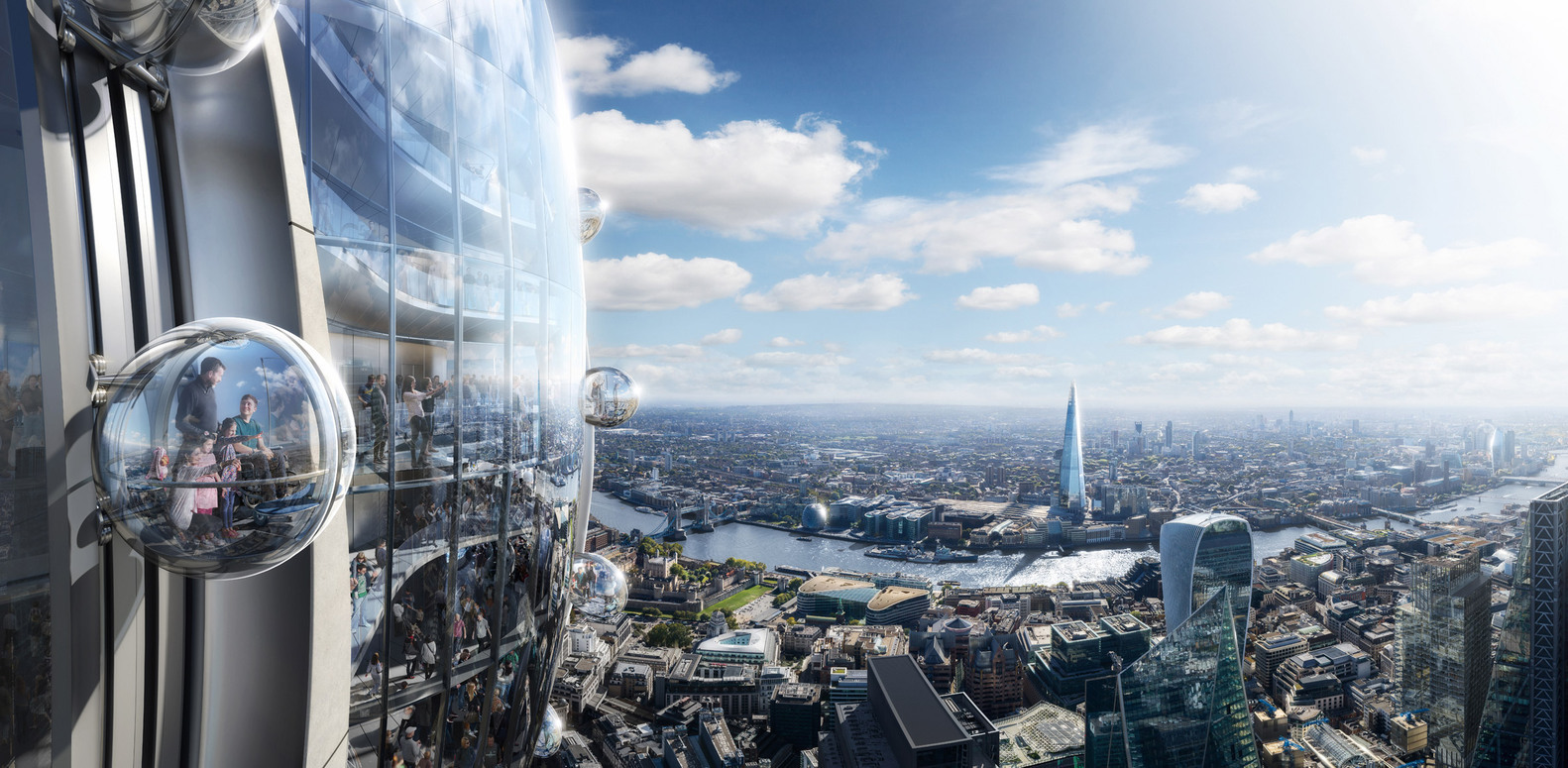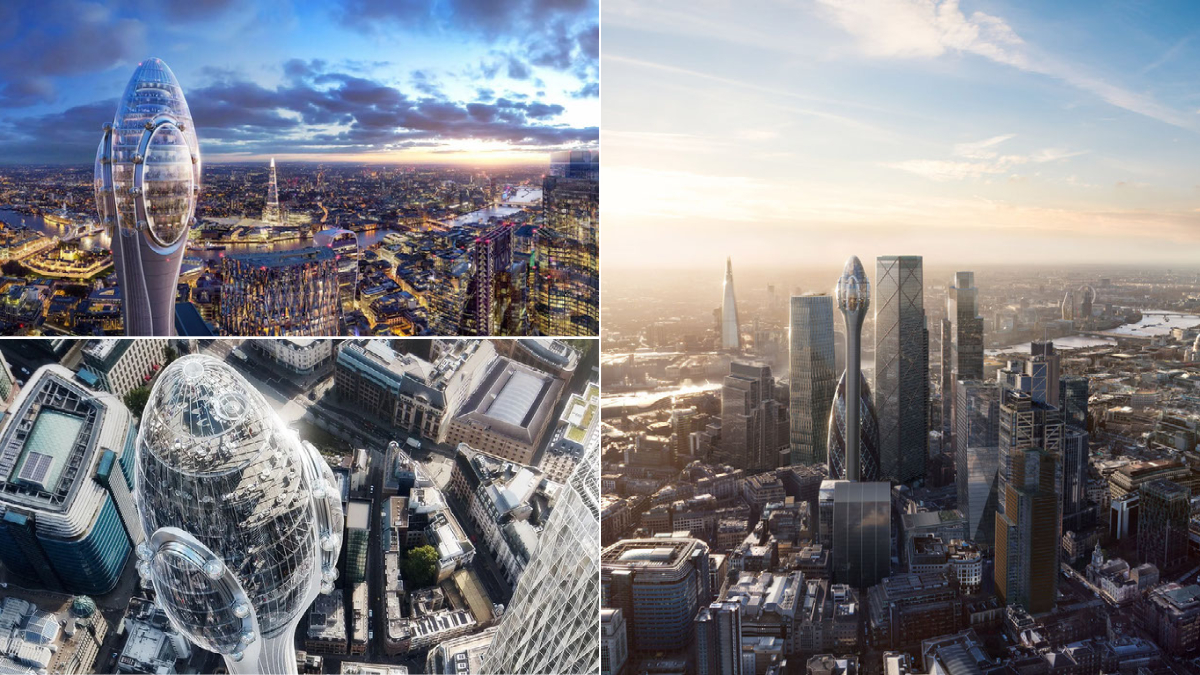Foster + Partners’ developed proposal of the Tulip Tower to be built in the City of London has been rejected yesterday by the UK government over concerns about the “highly sustainable” tower’s embodied carbon and design quality that might negatively affect the surrounding architectural heritage.
“The development would not amount to a design of outstanding quality, and that the quality of design would not be nearly high enough as to negate its harm to the settings of heritage assets,”
In a decision letter published on behalf of UK housing secretary Michael Gove, the planning consent for Foster + Partners‘ tower was dismissed and the project was called a “muddle of architectural ideas”. The minister believes the futuristic tower’s negative impacts will outweigh its positive impacts—mostly in terms of the surrounding historical buildings and towers, especially the White Tower.
“I find that the Tulip would seriously detract from the OUV (Outstanding Universal Value) of the WHS (World Heritage Site), and the significance of the White Tower in particular, and result in more than moderate impact. In the context of the enormous importance of the ToL (Tower of London) WHS, its significance as a whole would not be drained away but the contribution provided by its setting would be much reduced.”
In the letter, Gove stated that there is no information on how the design process, location, materials, height, and shape of Foster + Partners’ Tulip Tower took into consideration heritage concerns—which is something that should be accurately carried away in such a historical context.
The controversial 305-meter-tall (1,000 ft) visitor attraction, was conceived as a new public cultural and tourist destination that would enhance its surroundings. according to the team behind the project, the tulip sought to bring “wide cultural and economic benefits with a diverse program of events”.
Is Foster + Partners‘ Tulip Tower Really Highly Sustainable?
Although Norman Foster, Founder of London-based Foster + Partners, was speaking at the summit of the COP26 Climate Conference and calling for “higher standards” on embodied carbon in buildings, the UK Government highly criticized the environmental credentials of the Tulip Tower.
“The extensive measures that would be taken to minimize carbon emissions during construction would not outweigh the highly unsustainable concept of using vast quantities of reinforced concrete for the foundations and lift shaft to transport visitors to as high a level as possible to enjoy a view,” the decision letter said.
The government’s rejection of the high-profile firm’s proposal might come as a surprise, especially after the Daily Telegraph announced last month that the Tulip is surely getting the planning consent. However, a previous proposal for the tower was rejected by the Mayor of London back in 2019.
Mayor Sadiq Khan’s rejection in 2019 came on the grounds that it would provide “very limited public benefit” to the City of London and that it was not the “world-class architecture that would be required to justify its prominence”. The developer called to appeal the decision, but after holding a six-month public inquiry, a planning inspector had recommended that the government throw out the appeal.
It is worth mentioning that the company which submitted the planning application for Foster + Partners’ Tulip Tower on behalf of Brazilian billionaire Jacob Safra has the right to challenge the government’s decision by applying to the High Court.
“We are obviously disappointed with the outcome of the planning appeal, […] We feel that London has missed a great opportunity to embrace a progressive vision for the future of the City.”
—a spokesperson for Foster + Partners told Dezeen.
More by Foster + Partners
Two months ago, Foster + Partners revealed its masterplan for adaptive reuse and programmatic diversity project for an industrial site in Santiago, Chile. The project, which aims to regenerate the site of a mid-century factory, is Foster + Partners’ first project in Chile, and it includes refurbishing the existing factory building, La Fabrica, and developing a residential zone on the adjacent site to satisfy the need for mixed-use development.
A little earlier, it was leaked that Arup Group and Foster + Partners’ plans for a new station in Leeds may be canceled along with the eastern leg of the High Speed 2 (HS2) rail project. As suggested by reports in UK’s national press, the government is seeing the cancellation of the eastern extension of the High Speed 2 rail line from Bermingham, which would, accordingly, cancel the new stations built in the East Midlands and Leeds including the one by Arup and Fosters.
Image by DBOX for Foster + Partners
Image by DBOX for Foster + Partners
Image by DBOX for Foster + Partners
Image by DBOX for Foster + Partners
collage


